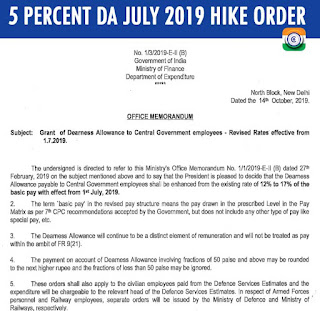Modimetrics raises efficiency of Central government employees
Central government employees seem to be on their toes and are spending extra time in their offices ever since the Aadhaar enabled Biometric Attendance System (AEBAS) was launched in September 2014.
An analysis of the last three months show that employees are spending nearly twenty minutes extra in office every day. If this is converted into man-days with an average of 8.5 hours per working day, the gain is equivalent to an additional workforce of almost 1,900 employees every single day.
The assessment is based on the ‘in-time’ and ‘out-time’ recorded by the system that has shown an increase over the last three months. “Ever since the system was launched, the average presence time in office of the registered employees has risen by about 20 minutes per day. Considering that over 47,000 employees are using it now, an average gain of 20-minutes per day means an approximate gain of 16,000 man-hours,” said a government official.
The study shows that the average ‘in-time’ of the staff was 9.28 am and the average ‘out-time’ of the staff has been recorded at 5.46 pm.
Marking attendance has still not been made mandatory, once that happens the average presence of employees is expected to increase further by 15 to 20, according to the analysis. Sources say, officials spending more time at work could also lead to more productivity and cutting down on pendency. Currently, 387 organisations have implemented the biometric system of attendence. The project is being expanded to all government offices.
The government has already issued orders for all central government offices across India to have an Aadhaar enabled Biometric Attendance System by Republic Day.
“The manual system of attendance may be phased out accordingly. The Department of Electronics and Information Technology (DeitY) will provide the technical guidance for installing the system. These orders come into force with immediate effect. All ministries are requested to bring this to the notice of all concerned,” the order of the Department of Personnel and Training said.
The government has also specified that disciplinary actions may be taken against officials who are habitual late-comers and also stated that early departure from work will also be treated as a violation similar to late-coming.
The Biometric Attendance System Dashboard (www.attendance. gov.in), which keeps updating itself in real time, throws out some interesting statistics. The dashboard on January 3, which was a Saturday and an off day for government employees, showed that 31.6 per cent of the staff showed up before the office start time of 9 am while, 38.8 per cent of the registered employees marked their presence between 9 and 10 am.
Despite a holiday, the dashboard shows that 6,267 employees who turned up for work and were in office quite early. Currently the office timing in ministries and departments of the government are from 9 am to 5.30 pm and for attached or subordinate office from 9.30 am to 6.00 pm without any option of flexi-time.
Source: http://indiatoday.intoday.in/
Central government employees seem to be on their toes and are spending extra time in their offices ever since the Aadhaar enabled Biometric Attendance System (AEBAS) was launched in September 2014.
An analysis of the last three months show that employees are spending nearly twenty minutes extra in office every day. If this is converted into man-days with an average of 8.5 hours per working day, the gain is equivalent to an additional workforce of almost 1,900 employees every single day.
The assessment is based on the ‘in-time’ and ‘out-time’ recorded by the system that has shown an increase over the last three months. “Ever since the system was launched, the average presence time in office of the registered employees has risen by about 20 minutes per day. Considering that over 47,000 employees are using it now, an average gain of 20-minutes per day means an approximate gain of 16,000 man-hours,” said a government official.
The study shows that the average ‘in-time’ of the staff was 9.28 am and the average ‘out-time’ of the staff has been recorded at 5.46 pm.
Marking attendance has still not been made mandatory, once that happens the average presence of employees is expected to increase further by 15 to 20, according to the analysis. Sources say, officials spending more time at work could also lead to more productivity and cutting down on pendency. Currently, 387 organisations have implemented the biometric system of attendence. The project is being expanded to all government offices.
The government has already issued orders for all central government offices across India to have an Aadhaar enabled Biometric Attendance System by Republic Day.
“The manual system of attendance may be phased out accordingly. The Department of Electronics and Information Technology (DeitY) will provide the technical guidance for installing the system. These orders come into force with immediate effect. All ministries are requested to bring this to the notice of all concerned,” the order of the Department of Personnel and Training said.
The government has also specified that disciplinary actions may be taken against officials who are habitual late-comers and also stated that early departure from work will also be treated as a violation similar to late-coming.
The Biometric Attendance System Dashboard (www.attendance. gov.in), which keeps updating itself in real time, throws out some interesting statistics. The dashboard on January 3, which was a Saturday and an off day for government employees, showed that 31.6 per cent of the staff showed up before the office start time of 9 am while, 38.8 per cent of the registered employees marked their presence between 9 and 10 am.
Despite a holiday, the dashboard shows that 6,267 employees who turned up for work and were in office quite early. Currently the office timing in ministries and departments of the government are from 9 am to 5.30 pm and for attached or subordinate office from 9.30 am to 6.00 pm without any option of flexi-time.
Source: http://indiatoday.intoday.in/








0 comments:
Post a Comment